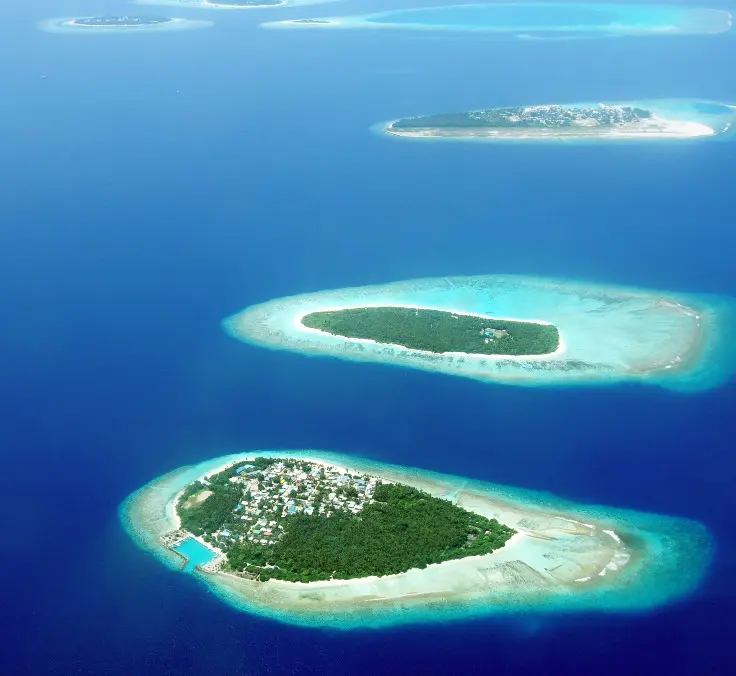SUSTAINABILITY| 10.06.2022
Energy communities, what are they and why are they trending?
While it is becoming increasingly clear that we must act now if we are to tackle climate change, it is often difficult to come up with “how to do it.” One potential action that is both feasible and accessible to all is to use renewable energies, and one way to do it is by promoting local energy communities.
According to EU data, energy communities are becoming increasingly common. The countries with the highest number are Germany, with about 1,800; Denmark, with 700; and the Netherlands, with 500. For its part, Spain has 33 registered energy communities. But do we really know what they are all about? Read on as we explain everything you need to know about this new trend in renewable energies.
What are energy communities?
Imagine that your neighborhood community or a group in your neighborhood wanted to benefit collectively from the same energy-generating facilities. Can you imagine what that might imply? Well, primarily, the harnessing of electricity generation capacity, improved energy efficiency, and the potential to manage the demand for sustainable mobility systems in the future. Ultimately, energy communities are built on the concept of local energy self-consumption. While it is not a new concept, it has gained prominence in recent years because of the many benefits it offers and because it has received a certain legal and juridical status on its way to becoming a key lever to accelerate the transition towards a more sustainable energy system free of CO2 emissions.
Why are self-consumption communities gaining in popularity?
These communities are recognized for their far-reaching environmental and social benefits. On the one hand, they are especially important for particularly vulnerable families, as they enable them to overcome energy poverty and save a great deal of money. They also enhance citizen empowerment while promoting local job creation and a more robust community fabric. Elsewhere, the environmental benefits include a decrease in energy consumption, an increase in distributed renewable energy, and a reduction in fossil fuel use.
According to data from the report ‘Community energy: the potential of energy communities in Spain,’ published by Amigos de la Tierra, the potential of this new trend in the electricity system is impressive, and it is estimated that 8,245 energy communities could produce 148,610 GWh annually by 2030. With this energy we would cover the equivalent of almost 100% of the electricity demand for self-consumption in the domestic and tertiary sectors in Spain.
Looking outside Europe, energy communities have also been recognized for their massive potential in the USA and Canada. In Latin America, on the other hand, the phenomenon is somewhat less well known, despite the fact that the International Renewable Energy Agency (IRENA) recognizes the potential of energy communities to produce sustainable electricity, especially in isolated areas where residents would benefit from managing their own self-consumption.
Purchasing renewable energy
In line with the energy community trend, MAPFRE is promoting the use of renewable energy by purchasing our energy from 100 percent renewable sources, installing photovoltaic panels on several buildings, completely refurbishing our facilities, and replacing the air conditioning equipment to meet specific energy-efficiency criteria. This demonstrates our commitment to energy efficiency as part of our sustainability strategy and our commitment to becoming an energy neutral company by 2030.
Green buildings and solar panels for self-consumption
Currently, 12 of our buildings, including Torre MAPFRE in Barcelona, are LEED (Leadership in Energy and Environmental Design) certified, and two other buildings have BREEAM and ENERGY STAR seals. These certifications confirm that these spaces have been built and designed to reduce their environmental footprint by conserving energy, making efficient use of water, reducing CO2 emissions, improving the quality of the indoor environment, and minimizing the use of natural resources, among other measures.
In 2020, we installed state-of-the-art solar panels on the buildings at our headquarters in Majadahonda, Madrid, Spain. As this project continues to grow, we hope to reduce our consumption by more than 500,000 kilowatt hours (kWh) — equivalent to 312 laps around the world and 4 million km in an electric vehicle.
We have already managed to generate around 400,000 kWh/year, equal to 4.5% of the headquarters’ electricity consumption in 2021, thus avoiding 100 tons of CO2 in emissions. In 2022, we will continue to increase our self-consumption in line with this strategic photovoltaic energy project, as stated in our Sustainability Plan 2022-2024.
Energy efficiency and resource efficiency
We have launched awareness campaigns such as ‘Warm Biz’ in Spain (to save energy consumption in winter) and ‘Cool Biz’ in Spain and Mexico (to save energy consumption in summer). In addition, 44 of our sites around the world are certified under the ISO 14001 Environmental Management System, 25 of which are also certified under the ISO 50001 Energy Management System. This integrated management system promotes efficient use of water, energy, and raw materials.
Offsetting emissions as part of a wind energy project in Mexico
We have offset 15,400 tons of CO2 through the Oaxaca IV Wind Farm, located near the Isthmus of Tehuantepec in the State of Oaxaca, Mexico. Thanks to this ACCIONA facility, which is part of one of the largest wind power complexes in Latin America, we have offset 84% of the carbon emissions emitted in Spain by 2021.
This initiative is part of the Corporate Greenhouse Gas Offsetting Strategy, which sets forth the environmental and social criteria for selecting projects to offset emissions that we are unable to reduce.
We have been successful in offsetting emissions thanks to the collaboration with Climate Trade, an international leader in efficiency and traceability of carbon offsetting services, which works with Acciona, the entity that manages the Oaxaca Wind Complex. This complex produces energy for 700,000 Mexican homes while preventing yearly emissions of 670,000 tons of CO2 into the atmosphere and promoting educational and community support activities.
Reforestation and decarbonization
The project to offset emissions in Mexico comes in addition to the achievements of ‘Bosque MAPFRE.’ Launched in 2021, this initiative encompasses all our reforestation actions aimed at preserving biodiversity, natural capital, and creating carbon sinks in areas where we operate. As of 2021, we have planted a total of 6,541 trees in Spain and Portugal, which will absorb 4,000 tons of CO2 from the atmosphere and, thus, neutralize 21% of our emissions in these countries.
All together, these initiatives meant we were successful in our goal of being a carbon neutral company in Spain and Portugal in 2021. Our commitment goes even further for 2030, as we aim to reduce our carbon footprint by 50% compared to 2019 and achieve carbon neutrality in all countries where we operate. And if that were not enough, by 2050, we hope to reach greenhouse gas neutrality, i.e., achieving zero net emissions in our insurance and reinsurance underwriting portfolios.
RELATED ARTICLES:




